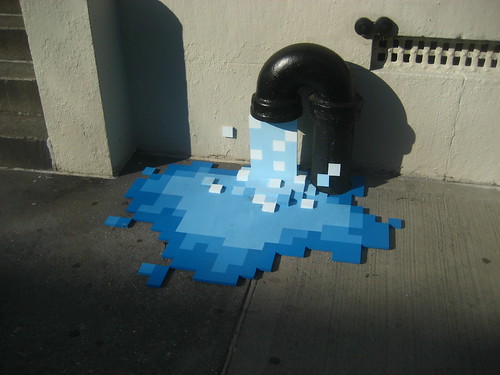An intriguing short article in the Economist from weeks ago, that I just read in what will surely be a failed attempt to *catch-up on back issues. In this one the article looks briefly at some of the things that Pixar does to maintain its 11-0 record of producing top-notch creative entertainment. A few points are worth repeating from the article.
* Creative reviews, even for stuff you’re not working on. Oftentimes a company gets to a size in which no one knows everything that is going on elsewhere, which results in overlap, duplication, inefficiencies and just plain bad organizational structures. Even at 1,200 people, evidently Pixar overcomes this by having people from everywhere come together and share what they are working on. ((“Employees show unfinished work to one another in daily meetings, so get used to giving and receiving constructive criticism.”))
* People before ideas. Creative individuals trump project ideas. Bring in creative talent and allow the ideas to come from that. ((“Most Hollywood studios start by hunting down promising ideas and then hire creative teams to turn them into films. The projects dictate whom they hire. Pixar starts by bringing in creative people and then encourages them to generate ideas.”))
This is a tricky one, but I think many technology heavy companies — if I can awkwardly translate a film production company from a gadget/software/network-services/internet production company — start with a doorknob and then try to find the family with a house and convince them to put this doorknob on the front door without understanding the life/practices/rituals of the people in the house. Perhaps curious, novel, patentable ideas without a clue as to how it might make sense to normal humans.
* Constructive post-mortems on projects. I think this is crucial. The time to consider what was done and what went right and wrong is a requirement if a team/company/studio is to learn from what it spent so much time and energy to create. ((“Pixar also obliges its teams to conduct formal post mortems once their films are complete…Pixar demands that each review identify at least five things that did not go well in the film, as well as five that did.”))
The article concludes with a warning and a reminder that there are no formulas for creative success — just a few ingredients, some luck and the benefits of leadership that is mindful that creativity is not something you can plan for.
“Managing creativity involves a series of difficult balancing acts: giving people the freedom to come up with new ideas but making sure that they operate within an overall structure, creating a powerful corporate culture but making sure that it is not too stifling. Few organisations can get this balancing act right in the long term—particularly as the formula can change over time.”

